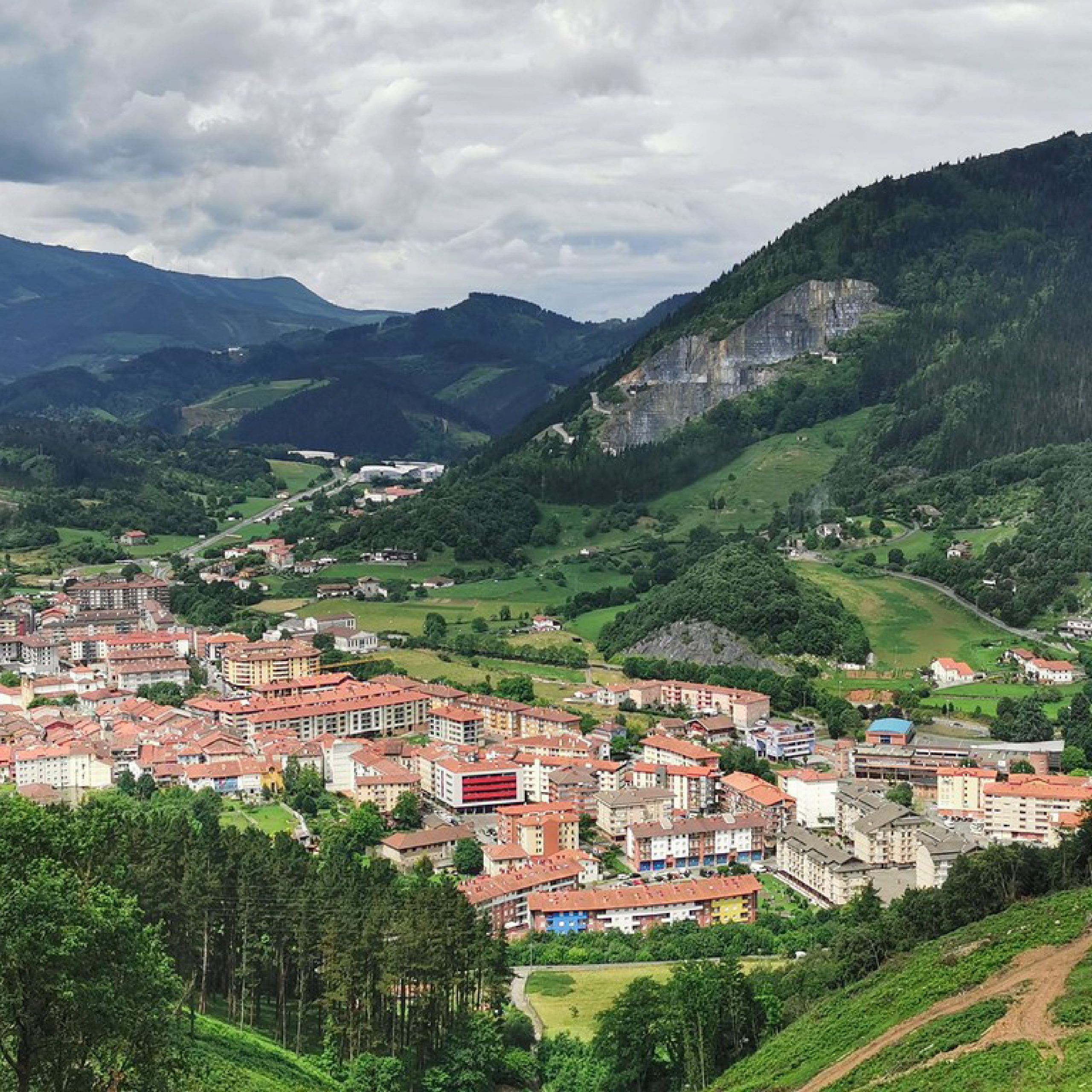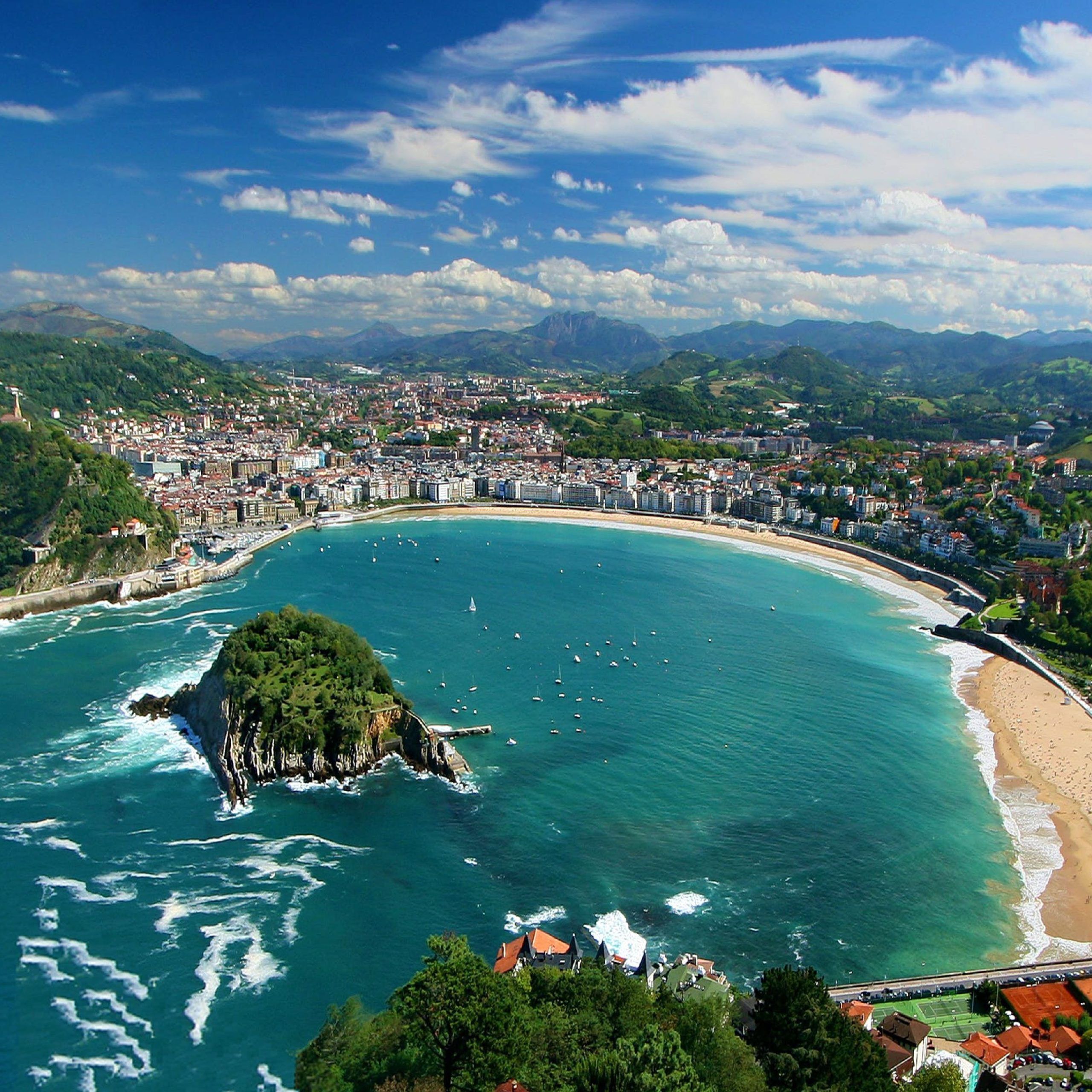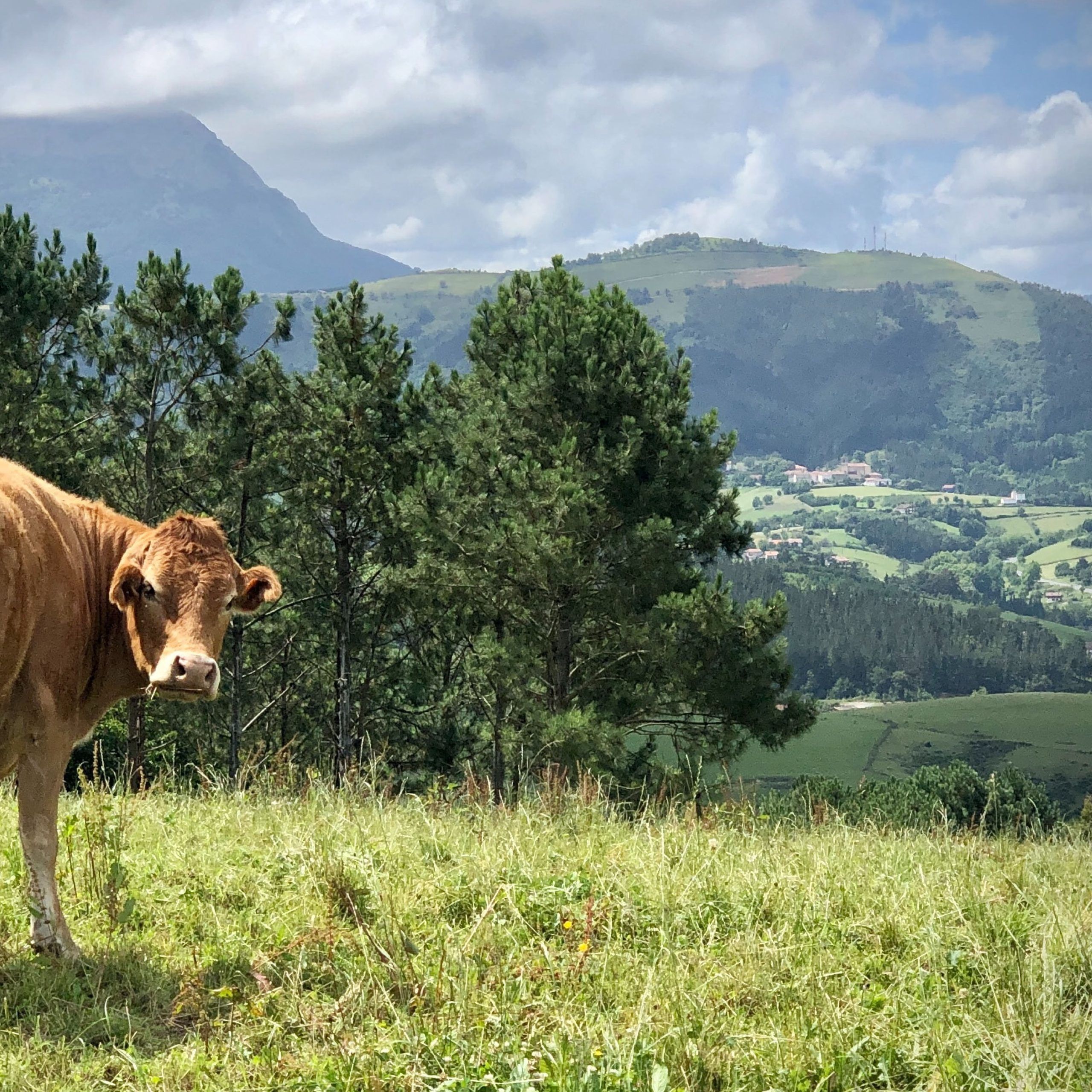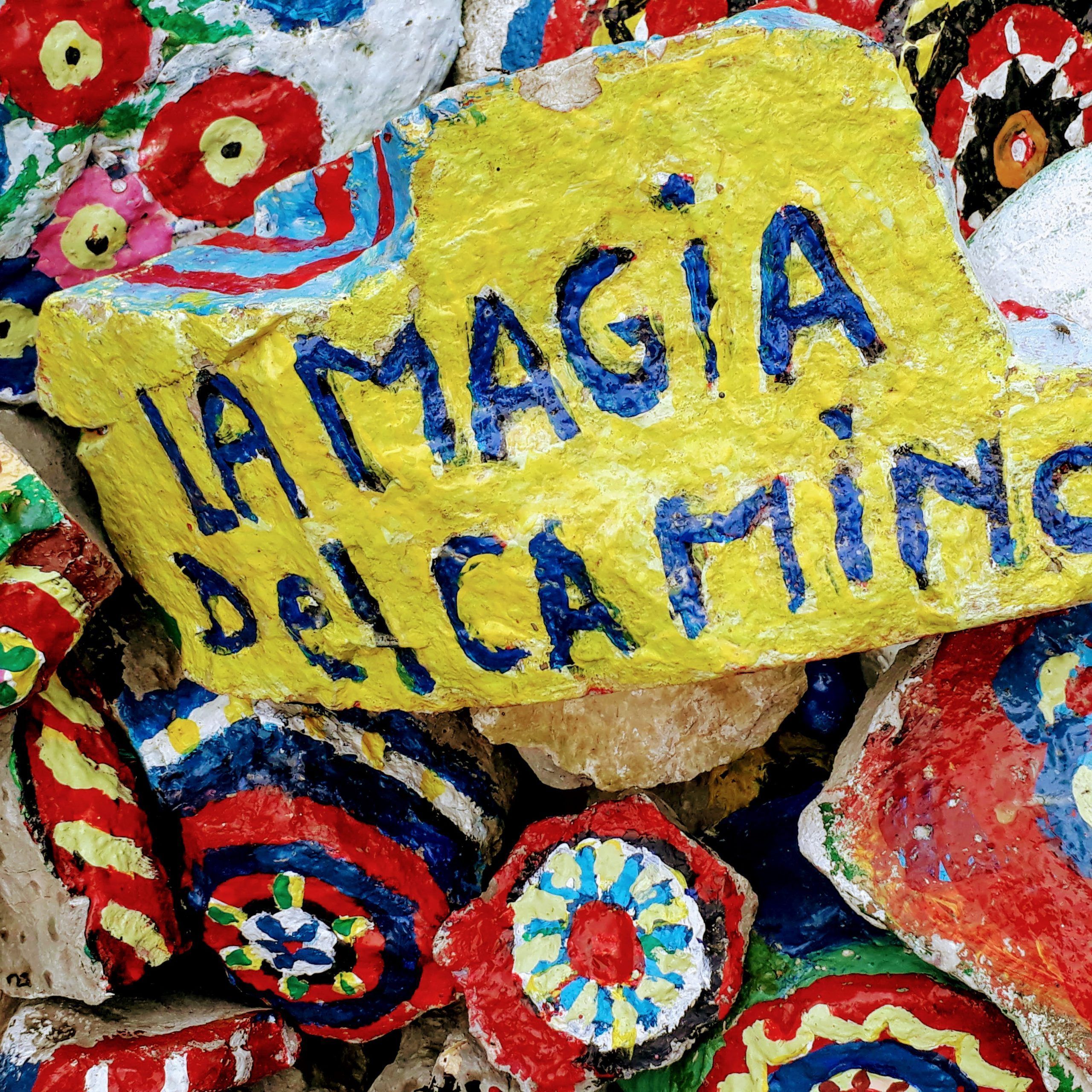Walking the Camino del Norte to Santiago de Compostela means to encounter cliffs, deep blue sea and the snowy peaks of majestic Picos de Europa. After the Camino Francés and the Camino Portugués, this pilgrimage between mountains and ocean stands in the wish list of many pilgrims.
This track leaves from San Sebastian, in the Basque Autonomous Community, towards Santiago de Compostela along the Northern coast of “Green Spain”, passing through Cantabria, Asturias and finally Galicia. From Ribadeo, Galicia, the Northern Camino takes pilgrims inland, across farmland and forests of rural Galicia on its way to Santiago de Compostela.
There is also another option, leaving from Oviedo, Asturias, where the Camino del Norte connects with the Camino Primitivo to follow to Santiago de Compostela.

Camino del Norte: my first-hand experience!
I walked from San Sebastian to Markina in 3 days, along the coastline of Northern Spain,just a section of the Camino del Norte, without getting to Santiago de Compostela. The cliffs and deep blue sea stand out against the snowy peaks of the Picos de Europa. I saw deserted beaches and medieval coastal towns. From time to time the path swerves inland into the forested hills, but it never took me long to descend to the ocean again. And the view? That is unbeatable on this part of the Camino del Norte!
San Sebastian – Getaria
My pilgrimage starts in San Sebastian. Fortunately, I still had some time left to explore this beautiful Basque city, also called the “Paris of Northern Spain” thanks to the presence of many state buildings. Famous is la Concha, the beach in the heart of the city, named after its perfect shape of shell. Many beachgoers can be found here in summer. In the evening I enjoy delicious pinxtos in one of the many bars that the city has to offer.

The next morning I get up early. My walking on the Camino del Norte is about to begin! The Camino del Norte leaves San Sebastian and the Gulf of Biscaye behind and follows west along the Basque coast. Today I have almost a whole day of hiking with a sea view. The trail starts with a steep climb to the top of Mount Igueldo. After this, the route continues with no particular height differences on rural roads. I walk through an open landscape of meadows, farms, pine forests and cypresses. Just before you reach the small harbor town of Orio, I pass the beautiful Romanesque Martinus Church. In the coastal town of Zarautz I take a first break with a café con lecheand tapas. The beach is used by many surfers, such a beautiful context to relax! After Zarautz the Camino picks up a medieval trail that takes you to Getaria our final destination. The Gothic church of this historic harbor town is definitely worth a visit.
Getaria itself is a pleasant coastal place, a fishing town with many bars and restaurants. A spacious port is located on the east side of the isthmus between the center and the peninsula of San Antón, nicknamed “The Mouse of Getaria” due to its shape. Another important economic activity is viticulture; Getaria is the main center of txakolina production, a Basque wine variety. But after such a day of walking, I go to the beach to rest.
Getaria – Deba
After a good breakfast I continue my Camino del Norte. It takes a while to find out how to get out of Getaria. The way in which they place the famous ‘yellow shell’ is apparently not very clear (with the yellow rays to the left, right or straight ahead). A shell simply means straight ahead. The coast disappears a bit from my sight, but I pass small villages where time seems to have stood still. I see the blue water again via an idyllic coastal road. It is Sunday, good weather and so many Spaniards visit the coast. And I understand why, the beaches are so beautiful. Clean, small, white sand and beautiful bays. And they are plentiful, so it is not really very busy anywhere.
Today the Camino del Norte again follows the medieval road along the coast. Along the way I enjoy beautiful views of the Atlantic Ocean. There is a steep climb to the village of Itiziar with the famous 16th century Santuario de Santa Maria. Deba itself is a traditional coastal town. Time seems to have stood still. After a delicious fresh fish and a glass of vino tinto, I crawl back into bed satisfied.
Deba – Markina
The last day of my Camino del Norte walk arrives. Today I walk to Markina. Sloping, with the occasional tough climb. Today the Camino del Norte takes me to the mountainous interior. And I also reach the highest point of this pilgrimage route. The top of the Col de Arno. There I have a unique view of all the beauty that Northern Spain has to offer. The coast and the mountains. I reach Markina through one of the most wooded areas of Northern Spain. In this historic town with a medieval center is the end of my pilgrimage for today. From Markina it is about 775 km to Santiago de Compostela and I am jealous of those who continue the Camino del Norte. But unfortunately my mini camino is finished. I enjoyed it and I’ll be back for more for sure!

About the Camino del Norte to Santiago de Compostela
The Camino del Norte is a pilgrimage route that stretches along the northern Spanish coast leading to Santiago de Compstela. The Camino del Norte was often used in the past by Dutch and Flemish pilgrims who docked by ship in the northern Spanish ports. They then moved west along the ocean until they crossed the Cantabrian Mountains to Santiago de Compostela at Oviedo via the Camino Primitivo. The Camino del Norte starts in Irun and ends, after 825 km, in Santiago de Compostela. In recent years, the number of pilgrims on the Camino del Norte has grown significantly, partly because people who have previously walked the Camino Francés want to get on the road again and then choose the Norte, for example. Also because people who go on a pilgrimage for the first time choose the Norte as an alternative to the “full”Camino Francés to Santiago de Compostela.
Embracing the Journey: A Camino del Norte Farewell
The Camino del Norte, with its captivating blend of ocean vistas and mountainous terrain, offers a pilgrimage like no other. As I reflect on the days spent traversing this sacred path—from the bustling streets of San Sebastian to the serene beaches of Getaria and the historic town of Markina—I am filled with a sense of profound gratitude for the journey and the landscapes that accompanied me. This Camino, a symbol of adventure and spirituality, invites us all to walk its length, to seek its hidden treasures, and to embrace the pilgrim spirit within us.
For those who have walked it, the Camino del Norte is an indelible memory; for those who yearn to explore it, an open invitation awaits. Whether you wish to complete the entire stretch to Santiago de Compostela or simply partake in a section as I did, the experience is sure to enrich your soul. If the call of the Camino beckons you, reach out to WAW.travel for a tailored journey across the heart of Spain, and step into a story that has been unfolding for centuries. Don’t hesitate to contact us for any curiosity, we will be happy to help you join this amazing adventure!Until we meet again on the trail, Buen Camino!



Comment (0)